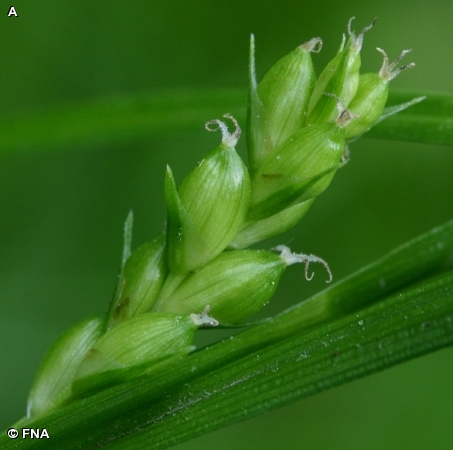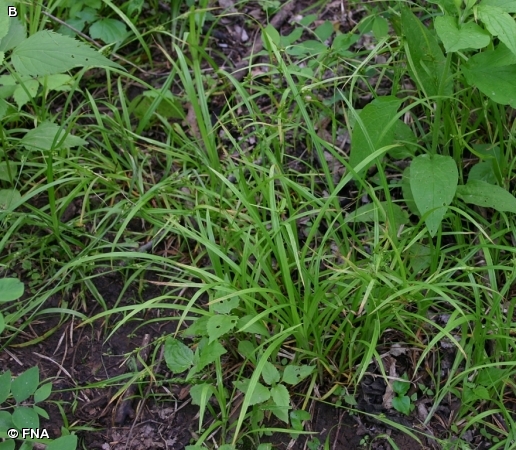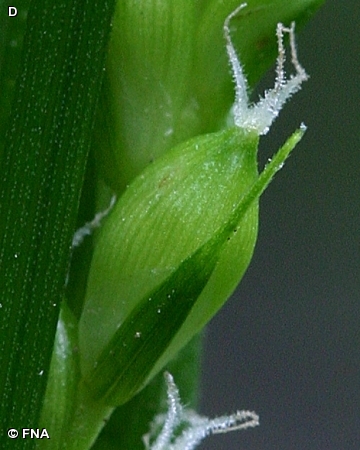
Sedge growing in small bunches (B). Fairly narrow leaves up to 1/3 inch wide have smooth and hairless sheaths. Flowering stems from 6-24 inches tall bear a single separate short-stemmed male spike above and 2-5 erect female spikes below (C). Female spikes have strongly overlapping perigynia spirally arranged about the long axis (A). The perigynia are beakless with straight tips (D).
Moist upland and lowland woods and ravine slopes. In Fontenelle Forest it is common in Spring and Mormon Hollows. There is a large patch of almost pure Gray Wood Sedge at the entrance to Spring Hollow. Look for it along each side of the origin of History Trail as it ascends the bluff above the railroad tracks. At Neale Woods it is common in the Neale/Settlers Trail junction area. Flowering occurs in early May with perigynia persisting into June.
Three other sedges with separate, upright male and female spikes are common in our uplands. Few-fruited Sedge (Carex oligocarpa) has female spikes, usually with fewer perigynia, that are arranged in two opposite ranks rather than the spiral arrangement typical of Gray Wood Sedge. Woodland Sedge (Carex blanda) has perigynia with curved beaks and narrowly winged, sharply triangular stems. Hitchcock’s Sedge (Carex hitchcockiana) has rough hairs on the leaf sheaths and more loosely spaced perigynia with beaks that are bent to one side.
The content of NatureSearch is provided by dedicated volunteer Naturalists of Fontenelle Forest who strive to provide the most accurate information available. Contributors of the images retain their copyrights. The point of contact for this page is: Neal Ratzlaff.



